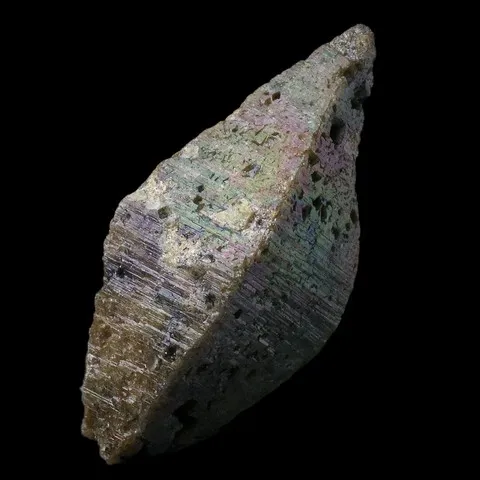ANATASE
Class : Oxides and hydroxides
Subclass : Oxides
Crystal system : Tetragonal
Chemistry : TiO2
Rarity : Rare
Anatase is a titanium oxide, a rutile polymorph. Although much rarer than the latter, it is typically found in alpine clefts and some metamorphic rocks of greenschist and amphibolite facies, and more rarely in some pegmatites and carbonatites. It takes its name from the Greek anatasis (extension) in reference to a particularly developed axis of elongation compared to other tetragonal minerals. Anatase forms acute or more rarely obtuse octahedra, sometimes tabular, rarely prismatic with often horizontally striated faces (characteristic alpine facies), as well as flattened crystals sometimes terminated by a double pyramide. It is a transparent to translucent mineral, sometimes opaque with almost metallic adamantine luster. Its color is usually yellow honey to dark brown or black, sometimes gray to dark blue. The crystals are small, rarely centimetric. Anatase is popular with mineral collectors but without special uses.
Anatase in the World
Anatase in France
The Alpine fissures of the French Alps have produced very beautiful anatases. The black octahedral crystals of the Plan du Lac near St-Christophe-en-Oisans (Isère) can reach 12 mm and the black-brown octahedra of the Col de la Madeleine (Savoie) near 30 mm (left photo). It is found more anecdotally in microcrystals in the alluvial deposits of some rivers of Haute-Loire and Cantal in especially.
Twinning and special forms
Rare on {112} and usually visible on small crystals. See photo on the right, twinned anatase specimen from Solumsasen Quarry, Holmestrand, Norway (copyright Enrico Bonacina - Source Mindat).

Fakes and treatments
There are no fake records for this species.
Hardness : 5.5 to 6
Density : 3.9 to 4
Fracture : Sub-conchoidal
Trace : White, yellow, grey
TP : Transparent to opaque
IR : 2.488 to 2.561
Birefringence : 0.073
Optical character : Uniaxial -
Pleochroism : Weak to strong
Fluorescence : None
Solubility : Insoluble
Magnetism : None
Radioactivity : None






